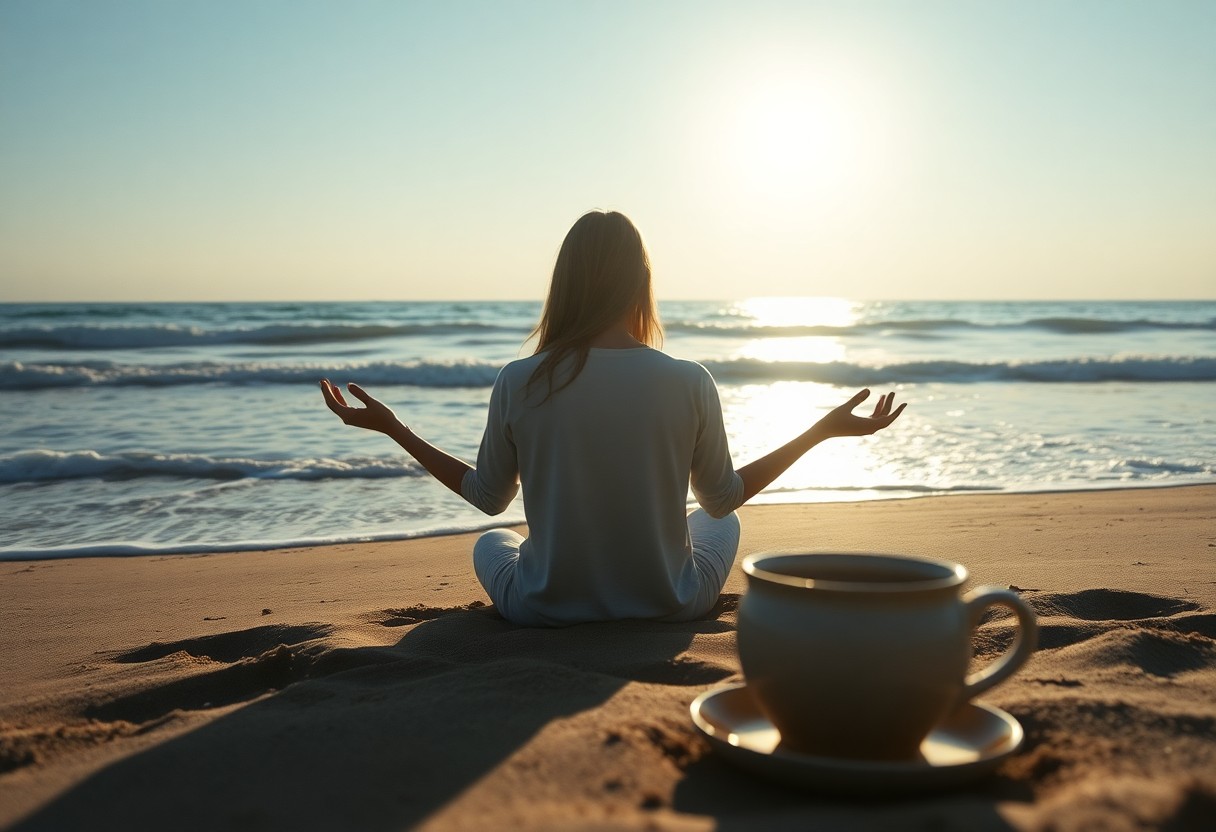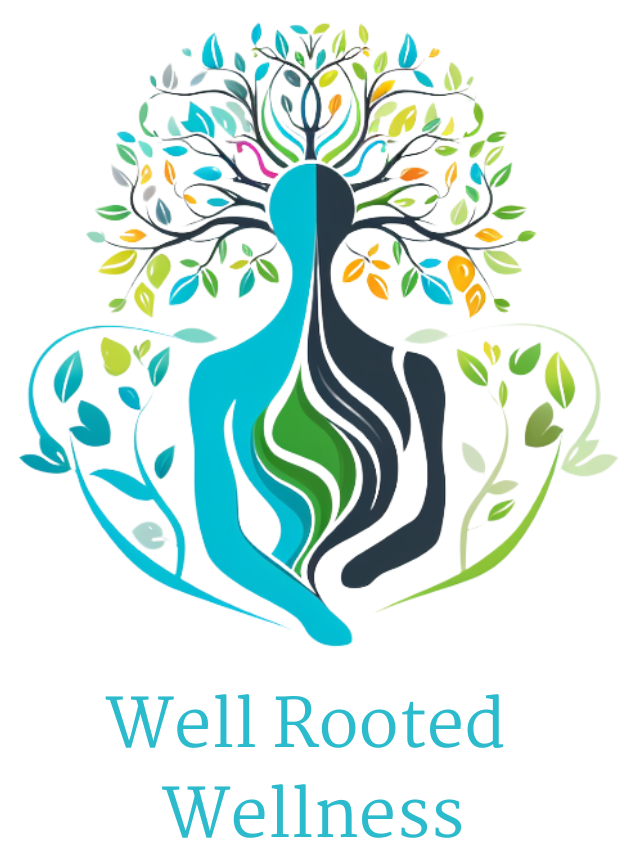Just like you, I’m always looking for ways to enhance my overall wellness, and incorporating daily mindfulness practices has made a remarkable difference. In this guide, I’ll share 10 vital steps that can help you on your journey to well-being through mindfulness. If you’re eager to explore practical methods to include in your routine, check out these 10 Simple Mindfulness Exercises to Add to Your Daily … that can effortlessly complement our focus on enhancing wellness. Let’s dive in together!

Understanding Mindfulness
Before plunging into the world of mindfulness, it’s necessary to grasp what it truly means. Mindfulness can be viewed as a mental state achieved by focusing one’s awareness on the present moment, while calmly acknowledging and accepting one’s feelings, thoughts, and bodily sensations. This practice invites an exploration into how I relate to my thoughts and emotions, allowing me to cultivate a greater sense of living in the now. If you’re curious about ways to infuse mindfulness into your daily routine, check out 10 simple ways to bring mindfulness into your life.
What is Mindfulness?
What I find fascinating about mindfulness is its ability to enhance my awareness of the present, transforming mundane moments into opportunities for peace and serenity. It’s not about eliminating stress completely but rather recognizing my thoughts and feelings without judgment. This gentle acknowledgment allows me to approach daily life with a more balanced mindset, reducing anxiety and enhancing overall well-being.
Types of Mindfulness Practices
Clearly, there are various types of mindfulness practices that I can incorporate into my routine. Each practice is designed to help me cultivate a deeper connection with myself and the world around me. Here are a few of the most popular types:
| Practice | Description |
| Meditation | Sitting in silence, focusing on breath or guided imagery. |
| Body Scan | Bringing attention to different body parts, promoting relaxation. |
| Mindful Eating | Focusing on the experience of eating, savoring each bite. |
| Walking Meditation | Walking slowly and deliberately, focusing on each step. |
| Journaling | Writing thoughts and feelings, reflecting on experiences. |
Recognizing the unique qualities of each practice allows me to choose which ones resonate best with my lifestyle. Mindfulness is about finding what truly works for me and developing a routine that nurtures my well-being. By embracing these practices, I can create a space of calm in my daily life.
A common approach to enhancing mindfulness involves integrating mindful moments throughout the day. While each practice might look different, they all share a fundamental goal: to bring attention to my experiences without distraction. Here’s a further breakdown of some effective mindfulness practices I can explore:
| Practice | Description |
| Breath Awareness | Concentrating on breathing to promote relaxation. |
| Gratitude Practice | Acknowledging things I’m thankful for to cultivate positivity. |
| Mindful Listening | Employing full attention during conversations to enhance relationships. |
| Nature Observation | Tuning into natural surroundings to foster connection with my environment. |
| Affirmations | Repeating positive statements to shift mindset and build self-esteem. |
Recognizing that there’s no one-size-fits-all approach encourages me to customize my mindfulness journey. Embracing what feels right and providing an avenue for personal growth is key to my ongoing wellness.

The Essential Steps
Now that we’ve explored the benefits of mindfulness, let’s probe into the vital steps that can help you enhance your wellness through daily mindfulness practices. By following these steps, you’ll create a routine that not only integrates mindfulness into your life but also supports your overall well-being.
Step-by-Step Approach to Daily Mindfulness
To launch on your mindfulness journey, I’ve broken down the approach into manageable steps. Here’s a simple table to guide you:
| Step | Description |
|---|---|
| 1. Set Your Intentions | Begin each day by setting a clear intention for your mindfulness practice. |
| 2. Create a Dedicated Space | Designate a peaceful area in your home where you can practice mindfulness. |
| 3. Start Small | Begin with just a few minutes a day, gradually increasing the duration over time. |
| 4. Use Guided Meditations | Consider using apps or online resources for guided mindfulness sessions. |
| 5. Connect with Nature | Spend time outdoors to reconnect with the natural world and promote mindfulness. |
Tips for Incorporating Mindfulness into Your Routine
Approach integrating mindfulness into your daily routine with an open mind and a gentle attitude. Here are some practical tips that have helped me successfully weave mindfulness into my daily life:
- Practice deep breathing exercises during breaks
- Pay close attention to your meals, savoring each bite
- Incorporate mindfulness into your exercise routine, focusing on your body’s movements
- Engage in mindful stretching or yoga to unwind
I’ve found that creating cues throughout the day can serve as reminders to practice mindfulness. For example, you might designate specific times to pause and take a few deep breaths or reflect on your surroundings. Additionally, try to establish mindfulness practices that you enjoy, as this makes it easier to incorporate them into your daily life. Your journey to mindfulness can be rich and fulfilling, enhancing your overall wellness and creating a sense of peace in the chaos of daily life. Perceiving mindfulness as a natural part of my routine has made all the difference.
Factors to Consider
Assuming you’re entering into mindfulness practices to enhance your wellness, there are several factors you might want to consider before initiateing on this journey. Your personal lifestyle, preferences, and environment can greatly influence your mindfulness experience. Here’s a quick list of factors to ponder:
- Your daily schedule
- The type of mindfulness practice you prefer (e.g., meditation, breathing exercises, yoga)
- Your physical environment and location
- Support system or community
- Time commitment and consistency
Perceiving mindfulness as a flexible practice allows you to tailor it to fit your individual needs, making it more effective in your life. You might find valuable insights about various Mindfulness exercises that resonate with you and can be integrated into your daily routine.
Personalizing Your Mindfulness Journey
Now that you’ve considered the various factors at play, it’s time to personalize your mindfulness journey. This involves figuring out what practices work best for you and how you can weave them into your daily life. For example, you might find that morning meditation sets a positive tone for your day, while an evening reflection helps you unwind. It’s about trial and error; don’t hesitate to experiment with different methodologies until you discover what feels right.
Personalization is key. You might prefer to practice mindfulness in a quiet room, outside in nature, or even while commuting. Think about your daily activities and identify moments when you can be more present, infusing mindfulness into those spaces. Over time, this will help you develop a routine that complements your lifestyle and enhances your overall wellness.
Identifying Obstacles to Mindfulness
Assuming you’re ready to embrace mindfulness, it’s important to confront any obstacles that might hinder your practice. These could be external distractions, emotional hurdles, or even self-doubt. Recognizing these barriers is the first step toward overcoming them; it’s like clearing a path that leads to a more fulfilling mindfulness experience.
With the fast pace of modern life, it’s easy to get swept up in daily distractions or stress, which can derail your mindfulness efforts. Reflect on what specifically pulls your focus away and consider journaling these thoughts. By acknowledging these obstacles, you can take proactive steps towards addressing them, crafting a clearer path for your mindfulness journey. Engaging in practices regularly can help solidify your commitment and create a haven of peace in your day-to-day life.
Benefits of Mindfulness
Your journey into mindfulness can unlock a treasure trove of benefits that enhance your overall well-being. From reducing stress to increasing emotional resilience, incorporating daily mindfulness practices into your routine helps in creating a more balanced and fulfilling life. With even just a few minutes of mindful breathing or meditation each day, I have experienced a greater sense of presence and clarity, which allows me to handle challenges with a calmer mindset. Mindfulness not only helps me to tune into my thoughts and emotions but also fosters a deeper connection with myself and those around me.
Pros of Daily Mindfulness Practices
Assuming you dedicate a little bit of time to mindfulness each day, you may find that your stress levels significantly decrease, allowing for a more peaceful mind. I’ve noticed that by practicing mindfulness, I’m able to cultivate a strong sense of self-awareness, which empowers me to make better decisions and approach my daily tasks with a newfound energy. Over time, the practice contributes to emotional regulation, helping me respond to life’s ups and downs with a greater sense of balance and strength.
Potential Cons to Be Aware Of
Mindfulness, while beneficial, can sometimes present challenges as you navigate through your own thoughts and feelings. For me, it can occasionally stir up unresolved emotions that I had buried deep within. At times, this can feel overwhelming, and my initial reaction may be to shy away from these feelings instead of embracing them. I’ve learnt that awareness of these moments is key to finding the balance in my practice.
Potential drawbacks to practicing mindfulness could include expectations that you might place on yourself for immediate positive outcomes. If you’re not seeing results as quickly as you’d hoped, it can be disheartening. It’s important to approach your mindfulness journey with patience and kindness toward yourself, as progress often takes time and consistent effort. Being aware of these potential challenges can help you navigate them more effectively, ensuring that your journey remains enriching rather than stressful.

Maintaining Your Practice
All great things take time, and incorporating mindfulness into your daily routine is no exception. It’s important to cultivate a habit that feels natural and rewarding for you. I’ve found that maintaining my practice becomes easier when I create a consistent schedule. By setting aside specific times of the day for mindfulness, whether it’s in the morning, during lunch, or before bed, I make it part of my routine. It can also help to keep your practice fresh by exploring different techniques, like guided meditations or mindful walking, to prevent it from becoming stagnant.
How to Stay Committed to Mindfulness
With so many distractions vying for our attention, I understand that it can sometimes feel challenging to stay committed to mindfulness. One strategy that works well for me is to set realistic expectations. I remind myself that mindfulness is a journey, not a destination. Even if I miss a day, it’s perfectly okay. What matters most is the intention to return and continue. I also like to track my progress, as seeing how far I’ve come helps to reinforce my commitment.
Community Support and Resources
Practice makes perfect, but finding a supportive community can be a game-changer for your mindfulness journey. Joining a local group or an online forum can provide me with encouragement and inspiration on days when I feel less motivated. Engaging with others who share the same passion not only offers a sense of belonging but also introduces me to various resources, from apps to books and workshops, that can deepen my practice.
Stay connected to your mindful practice by seeking out local mindfulness groups or virtual communities. Sharing experiences and tips with others can provide you with new insights and motivation. Collaborating with someone else can also create that extra layer of accountability, making it less likely for you to skip your mindfulness sessions. Plus, the shared journey can be filled with fun moments and learning opportunities that keep the passion alive! So, never hesitate to reach out and explore what’s available in your area or online.
Mindfulness in Everyday Life
Unlike the often hectic pace of modern life, integrating mindfulness into our daily routines can significantly enhance our overall well-being. By consciously practicing mindfulness, I find that I am more present in each moment, whether I’m sipping my morning coffee or taking a walk in nature. This heightened awareness allows me to engage fully with my experiences and savor the simple joys that might otherwise go unnoticed.
It’s not just about designated meditation time; it’s about creating a lifestyle that values and incorporates mindfulness throughout the day. I challenge you to find small pockets of time where you can simply pause, take a deep breath, and ground yourself in the present moment. These little slices of awareness can transform the ordinary into the extraordinary.
Integrating Mindfulness at Work
Clearly, the workplace can often feel like a pressure cooker, filled with deadlines and distractions. However, I have discovered that weaving mindfulness into my workday can transform my productivity and mental clarity. Taking just a few moments throughout the day to step away from my tasks and focus on my breath helps me reset my mind and approach challenges with a fresh perspective.
Beyond simple breathing exercises, I’ve found that practicing mindfulness during meetings, such as truly listening to colleagues without judgment or distraction, fosters a more collaborative environment. This not only enhances my ability to contribute meaningfully but also builds stronger connections with my team, turning daunting work tasks into opportunities for growth and partnership.
Mindfulness for Relationships and Family
Now, when it comes to relationships and family, mindfulness plays an vital role in nurturing connections. I intentionally carve out time to truly engage with my loved ones, free from distractions. This quality time allows me to listen actively and empathically, helping me to better understand their perspectives and feelings. By practicing mindfulness, I create a space where open and honest communication can thrive, ultimately strengthening the bonds I have with those I care about.
Relationships flourish when both people are truly present. By prioritizing mindfulness in my interactions with family and friends, I’ve noticed a positive change in the dynamics of our relationships. When conflicts arise, I’ve learned to approach them with a calm, open heart instead of reacting impulsively. This shift allows me to address issues constructively and fosters a deeper sense of understanding, love, and respect among us all. By making mindfulness a part of my relational toolkit, I find that my connections grow richer and more meaningful over time.
Final Words
Hence, embracing daily mindfulness practices can truly empower you to enhance your overall wellness. As I mentioned earlier, these ten vital steps act as a guide to help you cultivate a mindful lifestyle that fits seamlessly into your everyday routine. When I engage in mindful activities, I notice a significant improvement in my mood, clarity, and overall sense of well-being. Every small effort I make to incorporate mindfulness brings me closer to a more centered and fulfilling life.
It’s important to be gentle with yourself on this journey. You might find that some days are easier than others, and that’s perfectly okay. By consistently applying these steps, I’ve come to realize that mindfulness is not just a practice, but a way of living that enriches your experiences in countless ways. So, I encourage you to take these steps, be patient with yourself, and enjoy the beautiful transformation that mindfulness can bring into your life.



